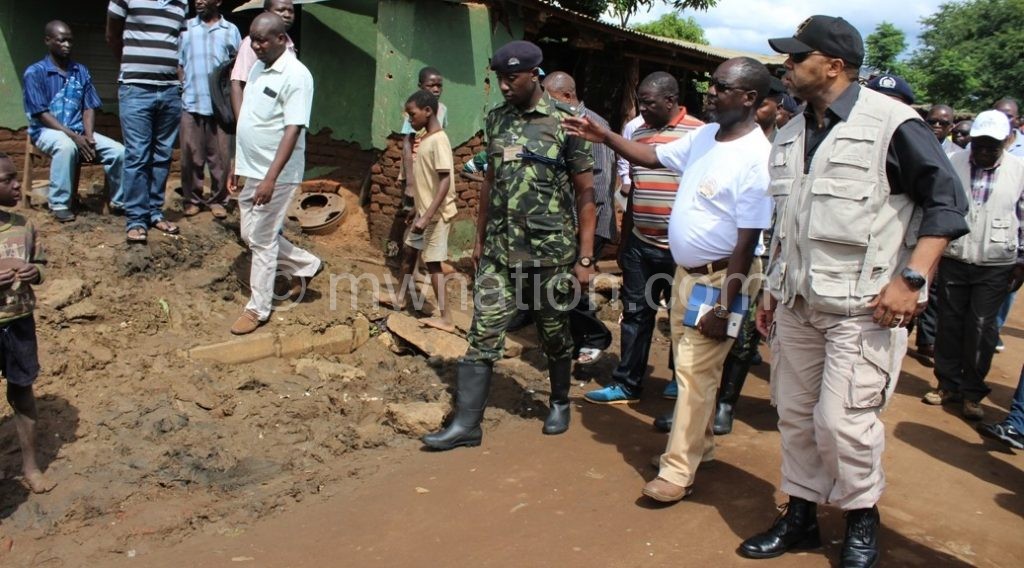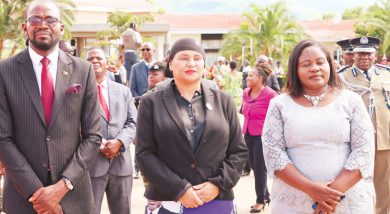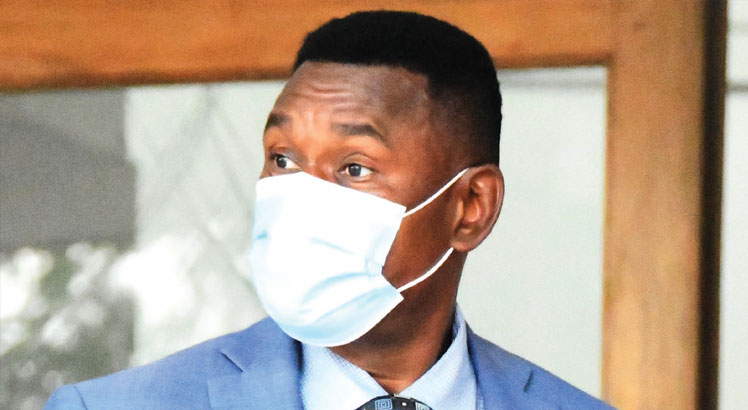Breaking cycle of disaster
The country continues to be ripped by disasters, especially chronic floods. Following recent floods which displaced thousands and killed three in Lilongwe, our reporter REX CHIKOKO caught up with Vice-President Saulos Chilima who heads the country’s disaster management efforts.

Malawi experiences perennial disasters, how did we prepare for these tragedies and how has government moved in to help those affected?
As a way of mitigating flooding, government is putting up control measures in flood prone areas. For example, government is constructing dykes in East Bank in Nsanje District. Another dyke will be constructed along Thangazi River to protect people of Gooke Village in Traditional Authority [T/A] Mlolo, another dyke will be constructed along Milole River in group village head Chapinga in T/A Mlolo to protect Masenjere Clinic and the surrounding villages from the floods. This is just to mention a few. As a preparedness measure, the Department of Disaster Management Affairs [Dodma],in collaboration with the Malawi Defence Force [MDF] ,has prepositioned rescue boats and personnel in flood prone areas.
How is the response to the recent spate of floods?
Currently, government is responding to the flood affected households in Lilongwe City, Ntcheu, Salima and other affected districts. The floods in Lilongwe displaced 67 households and they were being kept at Chimbalame CCAP Church in Mtandile. Because of inadequate facilities, especially latrines, bathrooms and water points, the department liaised with the displaced to move out of the camp and find rented houses. After reaching an agreement with the households, the department mobilised resources which it distributed to the displaced households as a start-up package. Each household was also provided with K25 000 cash for house rent and for starting small-scale businesses.
What about Salima?
Salima flood affected households – In Salima District, there are 1 730 flood displaced households who are still in five camps. Dodma in collaboration with its partners is continuing providing relief food items, tents, temporary latrines and chlorine for potable water as per the need at each camp. Dodma will soon engage Salima District Council on how these can be resettled as soon as the rains are over.
These disasters have become predictable, particularly in Karonga and the Lower Shire Valley where people seem reluctant to move upland. Is there any evidence that mass awareness interventions by Dodma are bearing fruits?
The issue of relocation is not as simple as it sounds. There are several considerations that need to be taken in relocating people. There are issues of providing basic amenities, like schools, health facilities, roads and potable water, to the new settlement sites. In some instances, it has not been easy to acquire new land where people can settle. This means that all the households living in disaster prone areas cannot be relocated at once.
Are there any priorities?
Government prioritised those living in very prone areas to relocate. So far about 200 households that were affected by the 2015 floods were relocated to Msonkho from GVH Osiyana and Chapinga in T/A Mlolo in Nsanje. Government, through the district councils, is still liaising with traditional authorities to facilitate the relocation of households who are staying in very prone areas. However, government is also assisting communities living in flood prone areas to ‘live with floods’ by providing them with flood mitigation structures like dykes and by setting up community based flood forecasting and early warning systems.
Some people insist on living in the areas prone to disasters in anticipation for relief items they receive annually. What are you doing to change this dangerous mindset?
Government, through district councils in the flood prone districts, is liaising with and sensitising the concerned communities to relocate to higher grounds. To reduce the dependence syndrome, government, through the Malawi Flood Emergency Recovery Project funded by the World Bank, is implementing public works programmes to assist communities that were affected by the 2015 floods to rebuild their livelihoods and build resilience to floods. Interventions such as small-scale irrigation, construction of flood mitigation structures to protect their assets, and afforestation are being implemented. These interventions are meant to reduce the dependency syndrome among the disaster affected communities.
What heart-rending stories have you encountered as you visit disaster-affected people?
[The cries] of some individuals who have been missed out in the provision of relief assistance; the shocking tales of some unscrupulous people snatching relief assistance from disaster affected beneficiaries. However, I was touched by the two kids who held to a maize stalk as Lingadzi River flooded until a helicopter rescued them. I was told their parents thought the children were dead only to be reunited later. That was God at work.Every dark cloud has a silver-lining. What positives come to your mind as you meet survivors trying to rise up again?
Really, there is hope. With sensitisation, the communities now understand that they have a big role in finding solutions for their perennial challenges that come by different disasters. With this understanding, it will be easy to work with the communities to address their disaster challenges. Our humanitarian partners are also appreciating the need to engage in developing the resilience of the affected communities instead of just providing relief assistance which does not address the root cause of the disasters. These factors will help government to engage in developing the resilience of the vulnerable communities so that they will be able to stand on their feet and not depend on handouts.
When the government and donors source relief assistance, are you satisfied with the way Dodma officers distribute them? Is the system water-tight?
The department is satisfied with the officers. However, the department is aware that there is no system that involves a number of people that is 100 percent water-tight. We are aware that there are some community leaders who are interfering with the smooth operation of the system by bringing in undeserving beneficiaries who are their close allies, thereby leaving out deserving affected households. We also partner our donors on some programmes: World Food Programme (WFP) for food and cash; International NGOs Consortium for cash transfer and Unicef for children’s welfare.
Will there come a time when Malawi will experience fewer predictable disasters because of proper planning?
Even in the highly developed countries like Japan and USA, they still experience disasters. Without any exception Malawi will continue to experience disasters considering the effects of climate change. However, government is doing everything possible to reduce the occurrence and impact of such disasters. Government, in collaboration with its partners, is implementing several interventions that are meant to reduce the occurrence and impacts of disasters and build community resilience. We can maintain the National Resilience Plan ‘Breaking the Cycle’ of food insecurity and the building of resilience to external shocks. There will, therefore, be a time when the country will experience fewer disasters because of the interventions currently being implemented..
Do you have anything else to say, for parting words?
While government is doing everything possible to protect its vulnerable citizens from the impact of disasters we should remember that disaster risk reduction is everybody’s responsibility, including the media.





